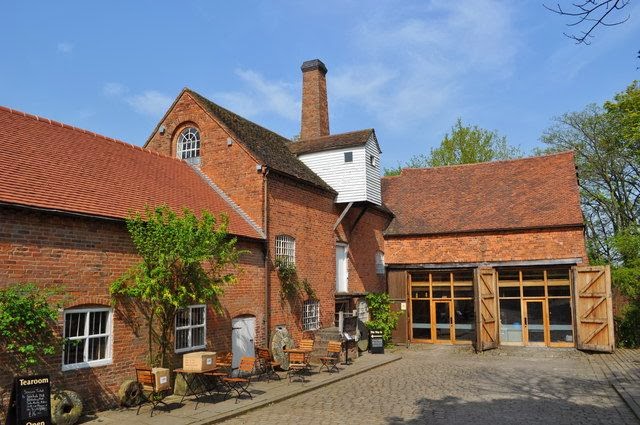Sánchez goes to London Town.
With only four weeks to go now before we head south to sunny Spain, Mrs. Sánchez suggested a trip to London Town to see the sights and visit some of our family members who now live in this immigration magnet and 'Babel of the modern world' where over 300 languages, including Spanish, are spoken, in Trafalgar Square alone, at any given moment. (The Daily Mail). So that's where we headed on leaving Victoria Station (named after nearby Victoria Street).
Everybody walks quickly in London because there is so much to see and we soon came to the (Catholic) Westminster Cathedral which is a bit disappointing. It was built in 1903 to compensate the Catholics for the Protestants pinching the real one up the road about 600 years ago during what the English heretics call 'The Reformation'. Too little too late in my opinion. Nobody seemed interested in it. Westminster Abbey (C of E) had people swarming all over it. Mrs. Sánchez insisted on pushing through the crowds to see what the little church at the side of the Abbey was called. It's St. Margaret's Church. Sir Walter Raleigh, the inventor of the bike is buried there.
Just across the way you can see Big Ben which is the most famous sight in all London. It's a big tower with a clock. Not a bell. The bell is called 'The Great Bell' . Big Ben was actually named after Ben Nevis, a big mountain in Scotland.
Statue of Richard (Crookback) the 3rd.
It's hard to take a decent photo of Big Ben. People keep getting in your way. This statue of Richard the Third of England appears to be looking at the tower where he murdered the 3 princes in 1483. Or did he?
London is just full of History. It's everywhere you go. In fact, any HIstory that's not in London is called Local History and doesn't matter.
It was just a short hop up Whitehall to Trafalgar Square but Mrs.Sánchez insisted on having her picture taken next to one of the Household Cavalrymen.
Mrs. Sánchez is on the left.
Trafalgar Square at last, named after Cabo de Trafalgar (Cape Trafalgar) on the south west coast of Spain where, in 1805, Spain played host to the Annual International Sea Battle Games . only 3 countries took part that year so everyone got a medal.
Admiral Lord Nelson (Team GB) won the battle but lost an eye, an arm and his life so they put a statue of him in Trafalgar Square. But why did they make the plinth so high? You can hardly make out what's up there. It could be anyone.
Nelson's Column
Seeing as how we had bought day travel cards (£12.50 each) I thought it was time to get our money's worth so we hopped on a number 9 bus which was passing. We don't have many buses in Álora but they are both newer than this old banger. A cheerful chinese chap welcomed us on board and said we could go upstairs if we wished, so we did and sat at the front.
Our 'Routemaster' Bus
What a convenient way to see the sights, but not conducive to photography. The old hard seats made for a bumpy ride and the windows were a bit dirty but I got a few snaps of some interesting landmarks . We soon passed St. James's Palace (anyone having a problem with that apostrophe can consult Wikipedia ) where the the Royal Stamp Collection is housed.
Next we passed The Ritz Hotel ( slogan 'Slip into somewhere more comfortable') where Mrs. Sánchez and I were once refused entry.
The Ritz.
We were also treated in a similar fashion at the Ritz in Madrid, too, so who can blame them?
The Albert Memorial and trees
You can just about make out the Albert Memorial behind the trees here. It's made of real gold from the old pavements of London Town and dedicated to Queen Victoria's German husband, Prince Albert who gave his name to one of the most popular forms of male genital piercing and the big concert hall across the road.
I have already apologised for the standard of the pictures.
We got off the bus in Kensington High Street and headed for one of London's 'best kept secrets', and judging by the number of readers this blog attracts it will safely remain a secret for some time to come. 99 Kensington HIgh Street.
99 Kensington High Street
It used to be Derry and Toms department store but keen observers will notice trees on the roof. They are part of 'The Garden in the Sky', opened in 1938 and costing £25,000 which was a lot of money in those days. We were looking for The Spanish Garden.
All you have to do is go into the entrance on Derby Street and ask the nice girl at the desk if you can go up to the roof garden, sign in and take the lift to the 6th. floor. Up there you'll find a 1.5 acre (6070 square metres) garden with a 30 inch (76 cm.) layer of topsoil and 5000 plant varieties, winding paths, a stream with fish and flamingoes and the Spanish Garden which is a bit like the Generalife at the Alhambra in Granada.
How's that for a treat?
And there's nice bar and restaurant (Babylon) on the fifth floor with stunning views of Battersea Power Station and all that tall London stuff.
After a large glass of house white each and some (free) nibbles in the Babylon Bar we jumped on another number nine and headed for the cultural campus of 'The South Bank' to meet our daughter and grandaughter.
February 25th. 2014







































.JPG)




